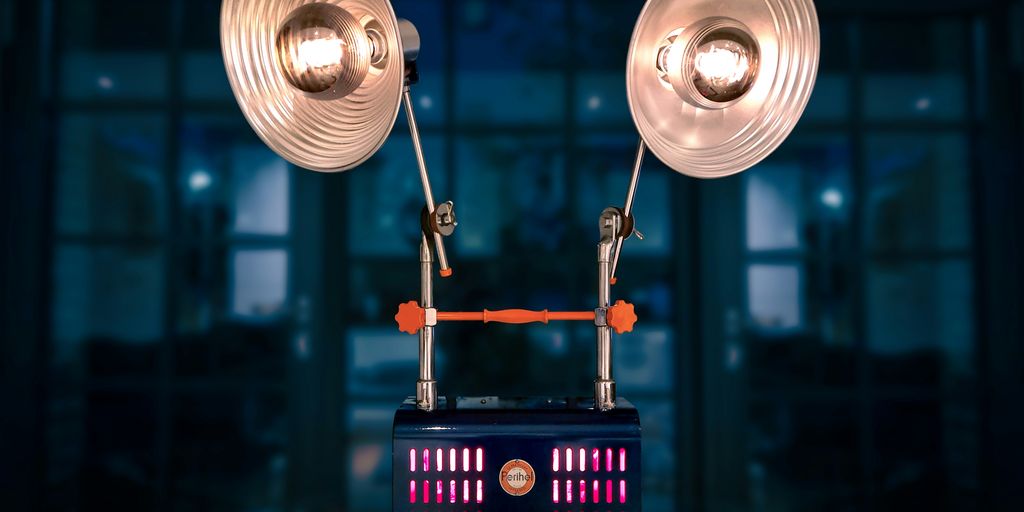The healthcare world is always changing, and new technology is a big part of that. It’s making things better for patients, improving how doctors work, and just generally shaking things up. As we get closer to 2025, there are some pretty cool healthcare industry technology trends that are going to make a real difference. These aren’t just small tweaks; they’re big shifts in how healthcare uses tech to help people and make things run smoother.
Key Takeaways
- Technology is making patient care more personal and easier to get, like through virtual visits.
- Artificial intelligence (AI) is a game-changer for finding new medicines and making healthcare operations more efficient.
- Managing patient data securely and sharing it easily is super important for good healthcare.
- New ways to give care, like treating patients at home, are becoming more common.
- Better communication tools are helping healthcare workers talk to each other and coordinate care better.
Advancing Patient-Centric Care Through Technology
Healthcare is really changing, and a big part of that is putting patients first. Technology is making it easier to do that, giving people more control and making healthcare more personal. It’s not just about fancy gadgets; it’s about making the whole experience better for everyone.
Personalized Health Journeys
The future of healthcare is all about tailoring treatments and advice to each person’s unique needs. Think of it like this: instead of getting the same generic plan as everyone else, you get a plan that’s designed just for you, taking into account your health history, lifestyle, and even your preferences. This is possible through data and digital tools that help health systems anticipate adverse health events.
Enhanced Patient Engagement Platforms
Patient engagement platforms are becoming more important. These platforms let you:
- Easily access your health records.
- Schedule appointments without the hassle of calling.
- Communicate with your doctor through secure messaging.
- Get reminders for medications and follow-up appointments.
These platforms are designed to make it easier for you to stay involved in your own care. They also help you connect with frontline workers and office staff across multiple specialties.
Accessibility Through Virtual Health
Virtual health is making healthcare more accessible, especially for people who live in rural areas or have trouble getting to a doctor’s office. It’s also great for people who just want the convenience of seeing a doctor from home. Virtual health includes:
- Telemedicine appointments with doctors and specialists.
- Remote monitoring of vital signs and other health data.
- Virtual therapy and counseling sessions.
This means you can get the care you need, no matter where you are. Alternative sites of care, such as virtual health or hospital-at-home, could help meet changing patient expectations.
The Transformative Power of Artificial Intelligence
AI is really changing things up in healthcare. It’s not just some buzzword anymore; it’s actually making a difference in how we treat patients and run hospitals. AI’s ability to analyze huge amounts of data quickly and accurately is leading to some pretty cool advancements.
AI in Drug Discovery and Development
Finding new drugs is usually a long and expensive process, but AI is speeding things up. AI algorithms can sift through tons of research papers and data to find potential drug candidates. They can also predict how effective a drug might be and identify possible side effects early on. This means less time and money spent on dead-end research. It’s like having a super-smart research assistant that never sleeps. I read an article about AI transforming digital marketing and it’s amazing how similar the applications are across industries.
Optimizing Operational Efficiency with AI
AI isn’t just for doctors and researchers; it’s also helping hospitals run more smoothly. Think about all the paperwork and administrative tasks that take up so much time. AI can automate a lot of that stuff, like scheduling appointments, processing insurance claims, and even managing inventory. This frees up staff to focus on patient care, which is what really matters. Plus, AI can help hospitals predict things like patient admission rates, so they can staff accordingly and avoid being understaffed or overstaffed. It’s all about using data to make better decisions. I saw a report that over 40% of health systems are already seeing a good return on their investments in gen AI.
Smart Devices and Predictive Analytics
AI is also making its way into smart devices that can monitor patients’ health remotely. These devices can track things like heart rate, blood pressure, and activity levels, and then use AI to analyze the data and identify potential problems early on. For example, a wearable device might detect an irregular heartbeat and alert the patient and their doctor before it becomes a serious issue. AI can also be used to predict which patients are at risk for certain conditions, so doctors can take preventive measures. It’s like having a personal health monitor that’s always looking out for you. This is especially useful for hospital-at-home programs, where patients need constant monitoring. The impact of emerging technologies like AI is really being felt across the board.
Revolutionizing Data Management and Security
Healthcare is generating data faster than ever. We’re talking about everything from electronic health records to data from wearable devices. Managing all this information, while keeping it safe and secure, is a huge challenge, but also a massive opportunity. It’s not just about compliance; it’s about building trust with patients and Healthcare Inventory Management Software making sure they feel comfortable sharing their information.
Securing Electronic Health Records
Protecting electronic health records (EHRs) is absolutely critical. These records contain sensitive patient information, making them a prime target for cyberattacks. We’re seeing more and more sophisticated threats, and healthcare organizations need to stay one step ahead. This means investing in robust cybersecurity measures, like encryption, access controls, and regular security audits. It also means training staff to recognize and avoid phishing scams and other social engineering tactics. It’s a constant battle, but one we can’t afford to lose.
Leveraging Big Data for Insights
Big data offers incredible potential for improving healthcare. By analyzing large datasets, we can identify trends, predict outbreaks, and personalize treatment plans. But to do this effectively, we need to be able to access and analyze data from multiple sources. This requires robust data governance policies and the right technology infrastructure. It also requires a commitment to data quality. Garbage in, garbage out, as they say. Here are some potential benefits:
- Improved disease detection
- More effective treatment strategies
- Reduced healthcare costs
- Better patient outcomes
Interoperability and Data Exchange
For big data to really work, different healthcare systems need to be able to talk to each other. This is where interoperability comes in. It’s about making sure that data can be exchanged [data security standards] between different systems seamlessly and securely. This is easier said than done. Different systems use different standards, and there are often technical and regulatory hurdles to overcome. But the benefits of interoperability are huge. It can improve care coordination, reduce medical errors, and empower patients to take control of their health information. It also means complying with regulations like HIPAA and GDPR, especially as more patients are global. It’s not just a recommendation; it’s a legal obligation. The penalties for non-compliance are severe, making it essential for healthcare organizations to adopt cybersecurity and data privacy measures that meet or exceed HIPAA and GDPR standards. Cloud-based data storage, VPN protection, and network access management are becoming more important.
Expanding Care Delivery Models
Healthcare isn’t just happening in hospitals anymore. The way we get care is changing, and it’s happening fast. We’re seeing a real push towards models that are more convenient and accessible for patients. Think about it – less waiting rooms, more options. It’s all about getting the right care, at the right time, in the right place. This shift is being driven by technology, patient demand, and a desire to make healthcare more efficient. Let’s take a look at some of the key areas.
Growth of Hospital-at-Home Programs
Hospital-at-home programs are gaining serious traction. They offer a way to receive acute-level care in the comfort of your own home. This isn’t just about convenience; studies show it can lead to better outcomes and lower costs. Imagine recovering from an illness or surgery without the stress of a hospital environment. It’s a win-win. These programs use a combination of remote monitoring, telehealth, and in-person visits from healthcare professionals. It’s like bringing the hospital to you. The expansion of virtual health options is a key enabler.
Alternative Sites of Care
We’re not just talking about hospitals and doctor’s offices anymore. Healthcare is popping up in unexpected places. Retail clinics, urgent care centers, and even mobile health units are becoming more common. These alternative sites of care offer a convenient way to get treatment for minor illnesses and injuries. They often have extended hours and are located in easily accessible areas. This is especially important for people who live in rural areas or have limited access to transportation. It’s about meeting patients where they are. Consider these points:
- Retail clinics offer convenient access to basic healthcare services.
- Urgent care centers provide treatment for non-life-threatening illnesses and injuries.
- Mobile health units bring healthcare services directly to communities in need.
Integrated Digital Health Ecosystems
Think of an integrated digital health ecosystem as a network of connected technologies and services that work together to provide a seamless patient experience. This includes everything from electronic health records to telehealth platforms to wearable devices. The goal is to create a system where information flows freely between patients and providers, allowing for more coordinated and personalized care. It’s about using technology to break down silos and improve communication. This integration is key to healthcare risk modeling and improving patient outcomes. The future is connected, and healthcare is no exception.
Fostering Seamless Communication and Collaboration
In the fast-paced world of healthcare, good communication isn’t just nice to have—it’s a must. It’s about making sure everyone, from doctors to nurses to administrative staff, is on the same page. When communication breaks down, patient care suffers, and that’s the last thing anyone wants. We’re talking about more than just sending emails; it’s about creating systems that allow for quick, clear, and reliable information sharing. Think of it as the glue that holds the entire healthcare operation together.
Improving Internal Communication Workflows
Let’s be honest, many healthcare facilities are still stuck in the dark ages when it comes to internal communication. Pagers, bulletin boards, and endless email chains? There’s got to be a better way. Upgrading to modern internal communication platforms can make a huge difference. These platforms can automate notifications, streamline scheduling, and make sure important updates reach the right people instantly. Imagine a system that automatically alerts staff to shift changes or new patient appointments. No more missed appointments or scheduling conflicts! Plus, these platforms can help with compliance by making it easier to distribute regulatory updates and policy changes. It’s about getting the right information to the right people at the right time, every time.
Connecting Frontline Healthcare Workers
Frontline healthcare workers are the heart and soul of any medical facility. They’re the ones providing direct patient care, often under immense pressure. Giving them the tools they need to communicate effectively is crucial. This means equipping them with secure, easy-to-use devices and apps that allow them to connect with colleagues quickly and easily. Think secure messaging apps for quick consultations, or wearable devices that provide real-time alerts and updates. It’s about making sure they feel supported and informed, so they can focus on what matters most: taking care of patients. Strong employee engagement, driven by clear and consistent communication, fosters a sense of belonging and helps staff stay connected to the organization’s goals.
Streamlining Cross-Specialty Coordination
Healthcare is a team sport, and that means different specialists need to work together seamlessly. But often, communication between different departments or specialties can be a real challenge. Information gets lost, things fall through the cracks, and patients suffer as a result. Implementing systems that facilitate cross-specialty coordination is essential. This could involve shared digital workspaces, integrated patient records, or video conferencing tools for virtual consultations. The goal is to break down silos and make it easier for different specialists to share information and collaborate on patient care plans. By implementing systems that allow for two-way communication, administrators can gather valuable feedback and address issues before they lead to burnout or turnover. These communication platforms also enable leaders to show staff that their voices matter, creating a culture of inclusivity and engagement. In a high-stress industry like healthcare, this sense of connection and community can make a significant difference in both employee engagement and retention rates.
Innovations in Medical Devices and Diagnostics

Wearable Health Technologies
Okay, so wearable tech isn’t exactly new, but it’s getting way more sophisticated. Think beyond just counting steps. We’re talking about wearables that can monitor glucose levels in real-time, detect early signs of cardiac issues, and even deliver medication. The key is the miniaturization and increased accuracy of sensors. These devices are becoming less about fitness tracking and more about proactive health management.
- Continuous glucose monitoring (CGM) for diabetes management is becoming standard.
- Smartwatches with ECG capabilities are helping to detect atrial fibrillation.
- Wearable biosensors are being developed to monitor stress levels and mental health.
Advanced Diagnostic Tools
AI and machine learning are completely changing diagnostics. It’s not just about faster results; it’s about more accurate and earlier detection of diseases. Imagine AI algorithms analyzing medical images with superhuman precision, spotting subtle anomalies that a human eye might miss. That’s the reality we’re moving towards. These AI algorithms are improving diagnosis and treatment.
- AI-powered image analysis for radiology (X-rays, MRIs, CT scans).
- Liquid biopsies for early cancer detection.
- Point-of-care diagnostics for rapid testing in remote locations.
Remote Patient Monitoring Solutions
Hospital-at-home programs are taking off, and remote patient monitoring (RPM) is a big reason why. RPM devices allow healthcare providers to keep tabs on patients’ vital signs and overall health from a distance. This is especially important for patients with chronic conditions or those recovering from surgery. It reduces the need for frequent in-person visits, making healthcare more accessible and convenient. The Internet of Medical Things (IoMT) is a network of interconnected medical devices.
- Blood pressure monitors and pulse oximeters for patients with hypertension or respiratory issues.
- Weight scales and activity trackers for patients with heart failure.
- Smart pill bottles to monitor medication adherence.
Workforce Development for a Tech-Driven Future
The rapid integration of technology in healthcare demands a workforce equipped with the right skills and knowledge. It’s not just about adopting new tools; it’s about reshaping roles and fostering a culture of continuous learning. Without a skilled workforce, the potential of these advancements will remain untapped. The 2025 Digital Health Technology and Regulation Conference is a great place to learn more.
Training for Emerging Technologies
Healthcare organizations need to invest heavily in training programs that focus on emerging technologies. This includes AI, machine learning, data analytics, and robotics. These programs should be hands-on, providing staff with practical experience in using these tools. It’s not enough to just understand the theory; they need to be able to apply it in real-world scenarios. Here are some key areas to focus on:
- AI-assisted diagnostics
- Robotic surgery
- Data security protocols
Adapting Healthcare Professional Roles
Technology is changing the roles of healthcare professionals. Tasks that were once performed manually are now automated, freeing up staff to focus on more complex and patient-centered activities. This requires a shift in mindset and a willingness to embrace new responsibilities. For example:
- Nurses may spend more time on patient education and care coordination.
- Doctors may use AI-powered tools to make more informed decisions.
- Pharmacists may focus on personalized medication management.
Digital Literacy for Healthcare Staff
Basic digital literacy is no longer optional; it’s a requirement. All healthcare staff, regardless of their role, need to be comfortable using computers, tablets, and other digital devices. This includes:
- Using electronic health records (EHRs)
- Communicating with patients and colleagues through digital channels
- Accessing and interpreting data from various sources
To help with this, organizations can implement digital literacy programs. These programs can provide staff with the skills they need to succeed in a tech-driven environment. Investing in workforce trends is an investment in the future of healthcare.
Wrapping Things Up
So, as we look ahead to 2025, it’s pretty clear that technology is going to keep changing healthcare in big ways. Things like AI and new ways to get care are not just buzzwords anymore; they’re becoming a normal part of how things work. For anyone in healthcare, staying on top of these changes is a must. It’s all about making sure patients get better care and that the whole system runs smoother. The future of healthcare is looking more connected and smarter, and that’s a good thing for everyone.
Frequently Asked Questions
How will technology make healthcare more personal and easier to access?
These new technologies will make healthcare more personal, allowing doctors to offer treatments that are just right for each patient. It will also help patients be more involved in their own health journey, making it easier to get care and understand their options.
What big changes will AI bring to healthcare?
AI will help doctors find new medicines faster and make hospitals run smoother. Smart devices will also predict health problems before they get serious, helping people stay healthier.
What does ‘Revolutionizing Data Management and Security’ mean for my health records?
It means keeping your health information safe and using all the health data we collect to learn important things. It also means making sure different health systems can share information easily so everyone has the full picture of your health.
Will I still go to the hospital for everything, or will things change?
This means more care will happen outside of traditional hospitals, like ‘hospital-at-home’ programs. It’s about getting care in new places and connecting all parts of your health journey through digital tools.
How will technology help doctors and nurses work together better?
It will make it much easier for doctors, nurses, and other healthcare workers to talk to each other. This helps them work together better, especially when different types of doctors need to team up for your care.
What kind of new medical gadgets can we expect?
You’ll see more cool gadgets like smartwatches that track your health, better tools for finding out what’s wrong with you, and ways for doctors to check on you from far away using technology.














